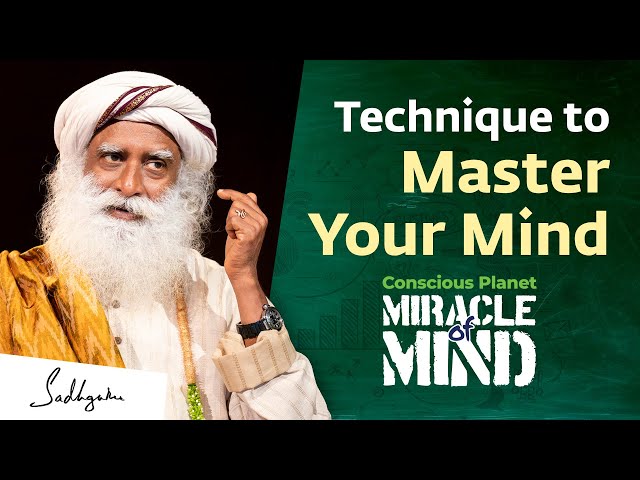Become Master of Your Mind with Sadhguru’s Technique
Introduction:In this captivating video, renowned spiritual leader Sadhguru delves into the incredible potential of the human mind and shares a powerful technique to unlock its true capabilities. As Sadhguru explains, most people fail to fully utilize their minds, limiting their perception of the world and their own experiences. By following this process, you can tap into the miraculous nature of the mind and unleash its unlimited potential.
Understanding the Mirror of the Mind:Sadhguru begins by metaphorically comparing the human mind to a mirror. He highlights that the way we perceive the world is not an accurate reflection of reality but is distorted by our mind’s inherent biases and identifications. Just as different creatures see the world differently, our human minds also have their unique lens through which we perceive and interpret things.
Distortions and Identifications:The mirror of our minds can become even more distorted when we strongly identify with certain beliefs, ideas, or prejudices. These attachments and identifications cloud our judgment and prevent us from seeing things as they truly are. Sadhguru emphasizes the importance of working on polishing the mind to remove these distortions and create a more accurate reflection.
The Reflective Nature of the Mind:Sadhguru explains that the mind primarily reflects the impressions received through our five senses. It faithfully reflects everything we observe, albeit not always accurately. However, he highlights an intriguing aspect – we never truly experience the world as it is, nor do we experience the one who is behind the mirror, our true self. The constant stream of reflections and lack of connection to our inner being leaves many people bewildered and unfulfilled.
Death and Bewilderment:Sadhguru draws attention to the overwhelming sense of confusion and bewilderment experienced by many individuals at the moment of their death. He explains that this confusion arises from the realization that they never truly lived or experienced the world. Only those who have had profound experiences or have gone beyond their identifications die either in joy or in pain, while the majority die without truly understanding or embracing life.
The Search for Truth and Being:Understanding the limitations of the mind, Sadhguru emphasizes the need to either see the creation as it truly is or to experience the one behind the mirror. Living a life solely based on the reflections on the mirror of the mind lacks depth and purpose. This realization propels us to seek mastery over the mind, allowing us to go beyond mere reflections and taste the true essence of life.
The Power of Geometry:Sadhguru introduces a simple yet potent technique to gain mastery over the mind – the exploration of geometry. He explains that triangles are the most fundamental and stable geometric shape. By focusing on observing triangles in everyday objects, we can train our minds to become more imaginative and grasp the true essence of forms and shapes. This exercise expands our perception and enhances our ability to visualize.
Imagination, Sleep, and Wakefulness:Sadhguru points out the paradoxical nature of our imagination. When we are asleep, our dreams are often vivid and lifelike, while our waking state is dominated by thought and emotion. He encourages us to develop a vivid imagination that is as real as reality itself. By refining our ability to imagine geometric forms, we cultivate a vivid and creative mind that can shape our experiences and transcend the limitations of the physical world.
Discipline and Mastery:While Sadhguru acknowledges that gaining mastery over the mind is not an overnight process, he emphasizes the importance of discipline and dedicated practice. He warns against misusing this newfound capability for personal gain or external influence but promotes the idea of using it as a tool for self-transformation.
Conclusion:In this remarkable video, Sadhguru presents us with a profound technique to unlock the full potential of our minds. By understanding the nature of our mental reflections, exploring the power of geometry, and cultivating a vivid imagination, we can transcend our limited perception and connect with the depth and bliss of our being. Embarking on this journey toward mastery over our minds opens up a world of infinite possibilities and allows us to truly experience the miracle of the mind.


